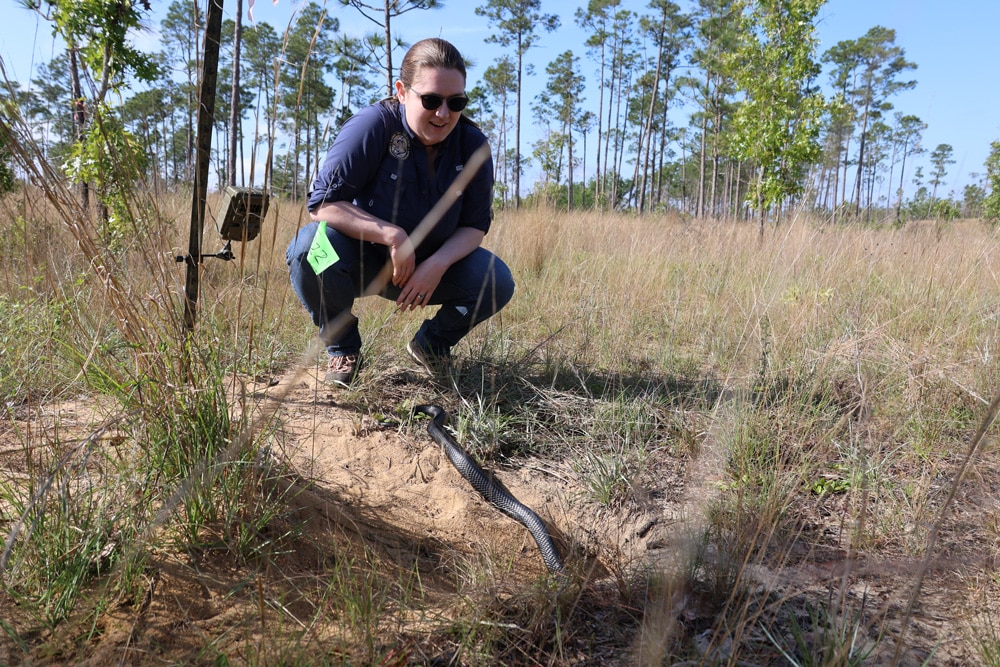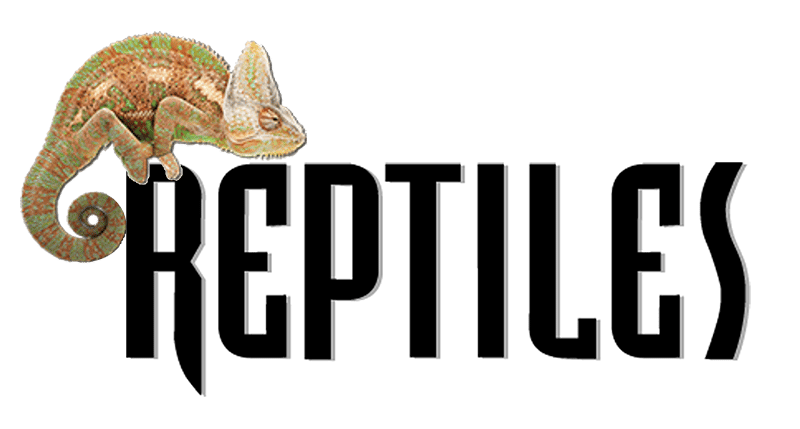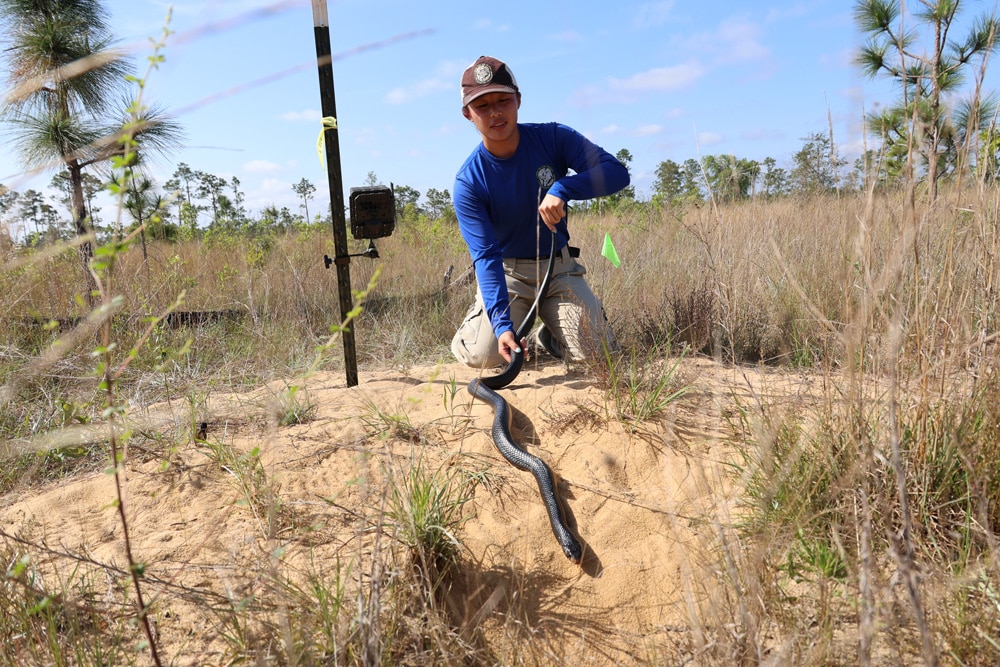The snakes, 22 females and 22 males, were hatched at the Central Florida Zoo & Botanical Gardens’ Orianne Center for Indigo Conservation (OCIC).
The Eastern indigo snake (Drymarchon couperi) is the largest native snake in the United States and is listed as federally threatened in the state of Florida and Georgia. Captive breeding programs have been established to rear and release these snakes back into their native habitats, and on April 29, 42 Eastern indigo snakes were released into the Apalachicola Bluffs and Ravines Preserve in Florida. The preserve, managed by The Nature Conservancy’s Center for Conservation Initiatives is the only site in the state that is designated for reintroduction of the Eastern indigo snake.

An Eastern indigo snake descends down into a burrow. Photo by Faith Flawn/FWC
The Nature Conservancy’s Center for Conservation Initiatives, worked with the Central Florida Zoo & Botanical Gardens’ Orianne Center for Indigo Conservation (OCIC), the Florida Fish and Wildlife Conservation Commission (FWC), U.S. Fish and Wildlife Service (USFWS), Welaka National Fish Hatchery, to release the 42 Eastern indigo snakes.
“We are so excited to see signs of progress as we enter our ninth year reintroducing this iconic species onto the landscape of Apalachicola Bluffs and Ravines Preserve,” Dr. James Bogan, Director for the Central Florida Zoo’s Orianne Center for Indigo Conservation said in a statement announcing the release of the snakes. “With this year’s release, we will have reintroduced almost 500 indigos back into the wild between the Florida and Alabama release sites.

The Eastern indigo snakes were hatched at then raised for two years before they were released. Photo by Faith Flawn/FWC
The snakes, 22 females and 22 males, were hatched at the Central Florida Zoo & Botanical Gardens’ Orianne Center for Indigo Conservation (OCIC). They spent the first year of their life at the zoo before they were sent to the Welaka National Fish Hatchery, where they spent the second year of their life before they were released April 29.
Examining Soil For eDNA Leads to Locating Eastern Indigo Snakes
In 2023, two wild-born hatchlings that are the offspring of previously released Eastern indigo snakes were observed in the preserve, which points to the success of the program. One female that was released in 2019 and 13 other snakes released between 2020 and 2023 have also been observed in the preserve, according to the Nature Conservancy.
Eastern Indigo Snake Information
The Eastern indigo snake is the longest native snake in the United States, sometimes reaching more than 8 feet in length. The snake is a federally threatened species and certain restrictions are in place with regard to possessing them. A member of the Colubridae family, indigo snakes feed on a variety of animals, including small mammals, amphibians, birds, lizards, baby turtles, and other snakes, including every species of venomous snake found in Florida.
The snake was historically found in southern Georgia, Alabama, eastern Mississippi and throughout much of Florida, but was largely extirpated from the ABRP due to habitat loss and fragmentation. The last sighting of an Eastern indigo in the ABRP prior to these latest release efforts occurred in 1982. The Apalachicola Bluffs and Ravines Preserve is the only area designated by the state for the introduction of the indigo snake. In 2022, a wild-hatched Eastern indigo snake was found in Alabama’s Conecuh National Forest, marking the second time in 60 years that a wild specimen was observed in the wild.



